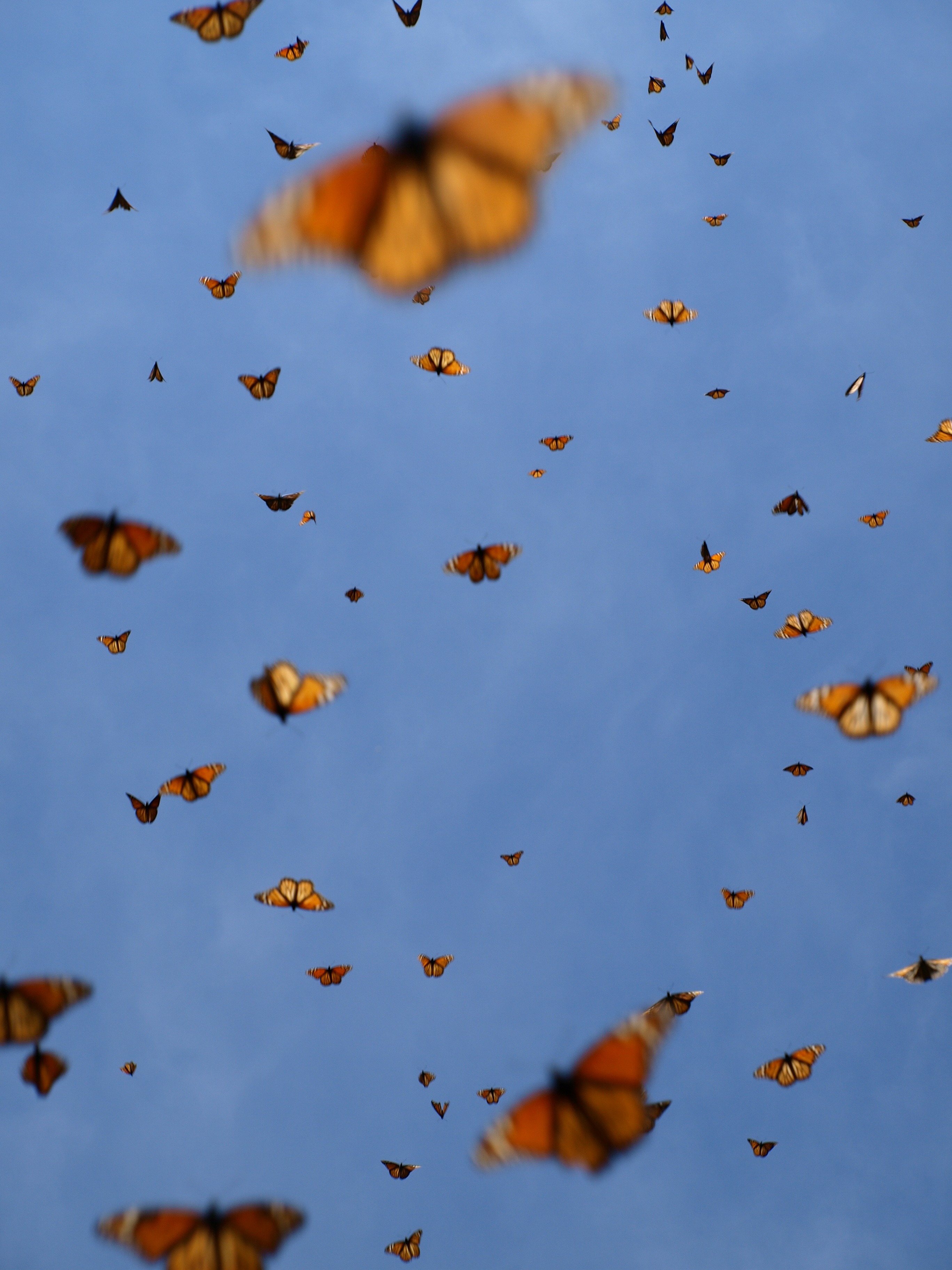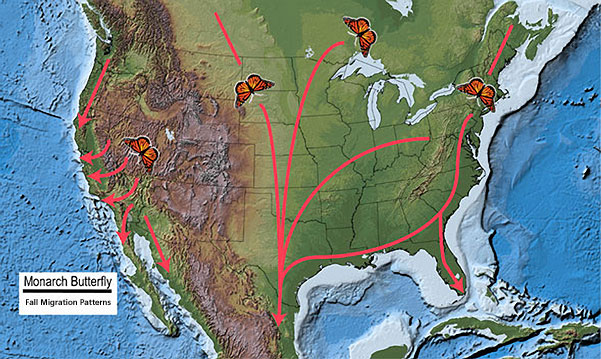
Monarchs roosting on a cypress tree branch, Feb. 2012, at the Pacific Grove Monarch Butterfly Sanctuary near Monterey, CA (Photo credit: James Lesko)
Four years ago, honeymooning in Big Sur, my husband and I stumbled onto an overwintering site for monarch butterflies. Monarchs arrive at pine and eucalyptus groves up and down California’s coast this time of year after migrating hundreds of miles. On a hike in Andrew Molera State Park, we noticed a couple of monarchs perched on low-hanging branches of eucalyptus. Then there were a few more, and a few more, until we were in the midst of dozens of flitting monarchs. We stared up into the trees with open mouths for a long time.
The overwintering site we found accidentally is not as impressive as the much larger ones in Mexico. The Monarch Butterfly Biosphere Reserve in the state of Michoacán gets hundreds of millions of monarchs every fall. The biggest roosts in California, in contrast, get tens of thousands of butterflies. Where a monarch will spend its winter depends on where it comes from: Monarchs east of the Rockies migrate to Mexico and the ones west of the Rockies come to California. But how the two populations know where to go every fall is still a mystery.
“That’s a question that has kept a lot of people busy for a while,” says Jaap de Roode, an assistant professor of biology at Emory University in Atlanta. Earlier this year, de Roode’s team published a study that yielded surprising results about monarchs.
Two or three generations separate the monarchs that leave the overwintering sites in the spring and the ones that return in the fall. There isn’t a chance for older generations to teach younger ones the route. The widely held belief is that monarchs know where to go because the two populations have evolved into distinct gene pools, which confer different migration strategies. The latest research from de Roode’s lab might turn that theory on its head.
They examined almost a dozen genetic markers which act as DNA “fingerprints.” They found that although monarchs in Hawaii and New Zealand (populations that don’t migrate) had diverged genetically from North American monarchs, eastern and western North American monarchs were indistinguishable from each other. They sampled monarchs from overwintering sites in California and monarchs en route to Mexico in St Mark’s, Florida.
“Just looking at the genetic fingerprint, we cannot tell whether that butterfly came from California or St Mark’s. That suggests to us that it is really one large population,” de Roode says. This evidence suggests that monarchs, possibly on their spring migration north, are somehow crossing the continental divide to, well, make like Romeo and Juliet and keep the gene pools mixed.

Monarchs flying in sky at Monarch Butterfly Biosphere Preserve in Michoacan, Mexico (photo courtesy of Jaap de Roode)
Further research will be necessary to figure out what does cause the two distinct migrations. De Roode’s study only looked at a few markers and there may be as yet unidentified genes that differ between the eastern and western populations. It’s also possible that environmental cues in eastern and western parts of the country have totally different effects on how monarch genes are expressed. The recently sequenced monarch butterfly genome will be instrumental in exploring these questions.
In the meantime, make the trip to one of the monarch groves up and down the coast. De Roode calls the Biosphere Reserve in Mexico a wonder of the world. Having visited a few, I’d say the California versions are pretty wondrous, too.
Monarchs at the Natural Bridges Park in Santa Cruz:
[youtube http://www.youtube.com/watch?v=XcHO0Aue9oI&w=560&h=315]

Interesting, Rina — and a great photo by Jim. This is a perennially catchy story, and new studies (like this one) keep drawing attention to what we know and don’t know about these migrations. Sarah Keller wrote one last year, as well, for mongabay: http://news.mongabay.com/2011/1109-ucsc_keller_monarchs.html
Yes, I’ve heard about the toll the droughts are taking on the monarch population. There is already concern that the wide-spread drought this summer will diminish their numbers even more this winter.